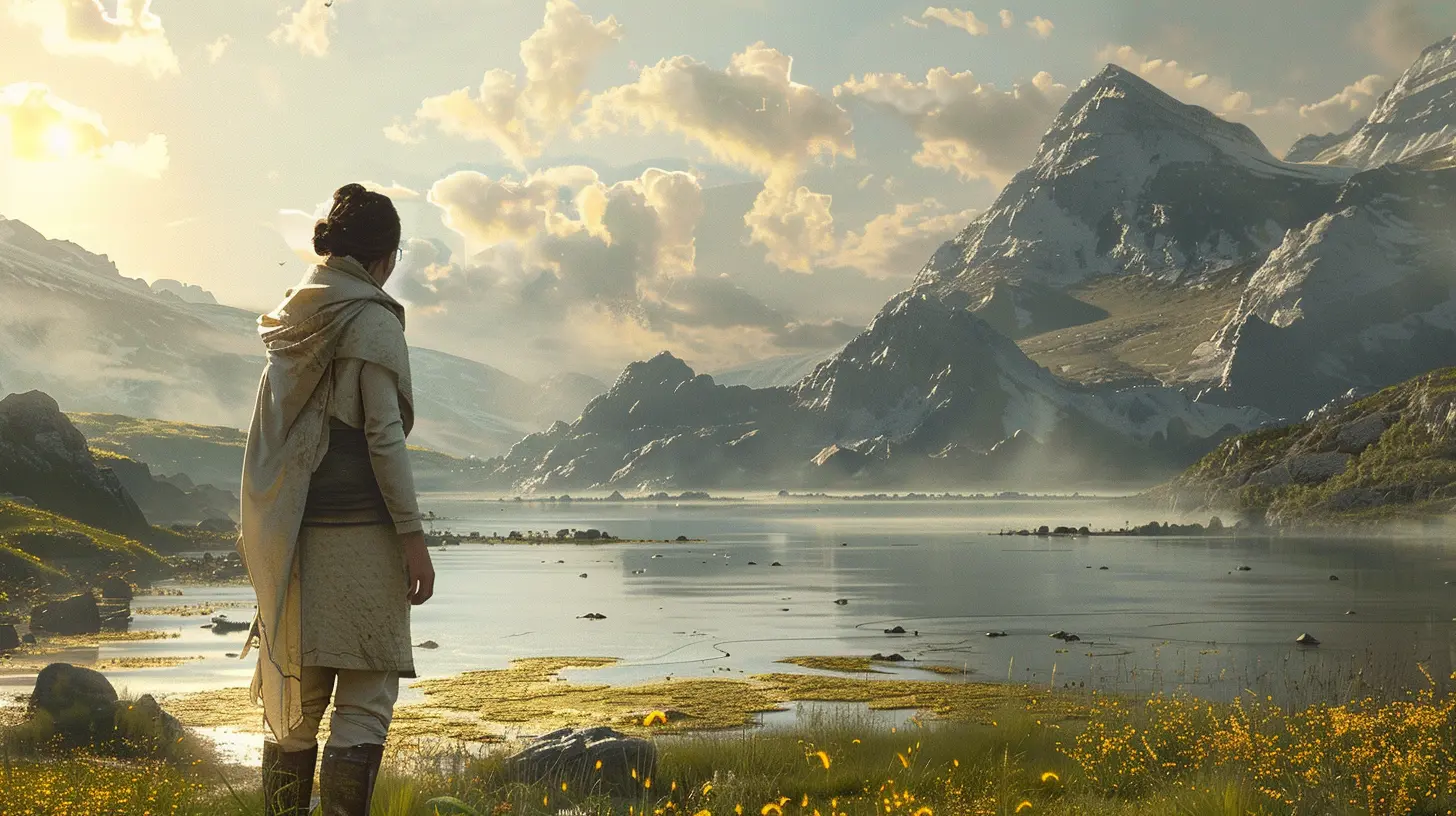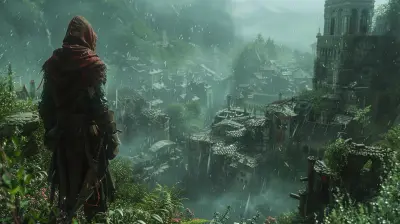Interactive Worlds: How NPCs and AI Respond to Creativity in Sandbox Games
7 August 2025
If you’ve ever wandered through the pixelated fields of Minecraft or constructed chaotic cities in Cities: Skylines, you know sandbox games thrive on creativity. These games give players the tools to build, destroy, and reshape worlds however they like. But what takes them to the next level? It’s not just the freedom they offer, but how the world responds to your actions. That’s where NPCs (Non-Player Characters) and AI (Artificial Intelligence) step in.
Think about it—sandbox games with interactive worlds feel alive. When NPCs react to what you build or when AI systems adapt to your creative chaos, the experience becomes richer, more immersive, and undeniably addictive. But how do sandbox games leverage these elements to keep players hooked? Let’s dive into the nitty-gritty.
Sandbox Games: The Canvas for Creativity
Before we get into the techy stuff, let’s paint the picture here. Sandbox games are basically the playgrounds of the gaming world. Unlike linear games with fixed goals and paths, sandbox games give you tools and say, "Go wild, have fun!" Think of it as being handed a box of LEGO bricks with no instructions—your imagination sets the limits.Games like Minecraft, The Sims, Terraria, and No Man’s Sky thrive on this concept. You’re not just a player; you’re a creator, a storyteller, maybe even a god in your digital world. But here’s the kicker: creativity truly shines when the in-game world feels like it responds back. When your actions ripple through the game’s inhabitants or AI systems, it’s like turning a silent movie into a fully interactive drama.
NPCs: More Than Just Background Characters
Let’s address the elephant—or should I say villager—in the room: NPCs. At their worst, NPCs are like cardboard cutouts in the sandbox, wandering aimlessly or repeating the same boring lines. But at their best? Oh boy, they can breathe life into your world.1. Reactive NPCs Make a World Feel Alive
Here’s the deal: NPCs that react to your actions create a sense of immersion. Take Minecraft’s villagers as an example. Sure, their “hmm” noises might get repetitive, but their behaviors are reactive. Build houses for them, and they use them. Trade with them, and they upgrade their trades. Attack them, and they’ll sprint away faster than you can say “creeper.” It feels like a two-way relationship—they depend on you, but they also keep you engaged by evolving as you do.Or look at Red Dead Redemption 2. Even though it’s not a sandbox game in the strictest sense, the NPCs there set the gold standard. They remember you. They comment on your actions. It’s like they have their own lives, and you’re just one part of their world. Now imagine such depth applied to a sandbox game. That’s a recipe for magic.
2. Quirky NPCs Add Personality
Ever noticed how some NPCs stick in your memory because of how quirky they are? Like the smug shopkeeper in Stardew Valley or the unpredictable Sims in, well, The Sims. These characters add a layer of fun and unpredictability that makes the game world less sterile and more relatable. A witty one-liner from an NPC might be all you need to laugh and keep playing.
AI: The Brain Behind the Scenes
NPCs might be the face of interaction, but AI is the wizard pulling the strings behind the curtain. Sandbox games have become increasingly reliant on AI to create dynamic, adaptive worlds that respond intelligently to players’ creativity.1. Procedural Generation: Building Infinite Worlds
Let’s talk about procedural generation for a second. Games like Minecraft and No Man’s Sky wouldn’t even exist without this tech. Procedural generation uses algorithms to create vast, unique worlds every time you start a new game. It’s the reason you’ll never run out of things to explore.But here’s the twist: it’s not just about creating landscapes. It’s also about populating them intelligently. AI ensures that the world feels natural, whether it’s placing resource nodes strategically or generating a village in just the right spot.
2. Adaptive Behavior: AI That Learns From You
Now, this is where AI flexes its muscles. Adaptive AI remembers what you do and adjusts the game world accordingly. Think of games like Dwarf Fortress. It’s not just a sandbox; it’s a living world. The AI tracks the history of your actions. Every decision you make, from building a fortress to waging war on goblins, has long-term consequences. It’s like playing chess, but the board is alive and constantly shifting.AI adaptation isn’t exclusive to complex strategy games either. Even in survival sandboxes like Don’t Starve, the world fights back. Harvest too many resources, and you might provoke the wrath of nature itself. This dynamic response keeps players on their toes and makes the world feel like more than just a static backdrop.
Creativity Meets Consequences: Why It Matters
So why does it matter whether AI and NPCs react to creativity? Because without these systems, sandbox games can feel hollow. Imagine spending hours building a massive castle, only for the NPCs to completely ignore it. That’s demotivating, right?When the game world acknowledges your efforts, it validates your creativity. Whether it’s villagers moving into your structures or enemies adjusting their tactics to counter your strategies, interactions make your actions feel meaningful. They add depth and replayability, encouraging players to experiment rather than just following a checklist.
The Challenges of Interactive Worlds
Creating interactive worlds isn’t all sunshine and rainbows. Developers face a ton of challenges when designing AI and NPCs for sandbox games.1. Balancing Complexity and Accessibility
Interactive NPCs and AI systems can sometimes overwhelm players. Not everyone wants to micromanage relationships with villagers or deal with enemies that are too smart for their own good. Striking a balance between complexity and accessibility is key. The best sandbox games make these systems intuitive without dumbing them down.2. Resource Limitations
AI can be a resource hog. The more intelligent and interactive NPCs and AI are, the more computing power they require. Especially in massive sandboxes, developers have to make trade-offs between world size, graphics, and interactivity.The Future of NPCs and AI in Sandbox Games
The future’s looking bright (and maybe a little scary) for sandbox games. With advancements in AI like machine learning and natural language processing, NPCs might someday feel indistinguishable from real players. Imagine chatting with an NPC who not only understands you but can also adapt their dialogue based on your in-game history. Crazy, right?And what about AI-driven storytelling? We’re already seeing glimpses of this in games like AI Dungeon, where the entire narrative is driven by your input. Imagine the day when AI seamlessly generates not only worlds but also dynamic storylines tailored to your every action. It’s like creating a unique Netflix series for every player.
Wrapping It Up
Sandbox games are already a blast, but when NPCs and AI rise to the occasion, they become something truly special. These games transform from blank canvases into living, breathing ecosystems where creativity doesn’t just exist—it thrives. Whether it’s villagers reacting to your builds or AI systems crafting a world that evolves with you, the interplay between creativity and interactivity is what sets sandbox games apart.And honestly? We’ve barely scratched the surface. The possibilities for smarter NPCs and more adaptive AI in the future are mind-boggling. One thing’s for sure, though: the line between player and creator will only blur further, making gaming worlds more immersive than ever before.
all images in this post were generated using AI tools
Category:
Sandbox GamesAuthor:

Tayla Warner
Discussion
rate this article
1 comments
Nell McMillen
This article adeptly explores the evolving dynamics between player creativity and NPC responses in sandbox games. The integration of advanced AI not only enhances immersion but also fosters unique player narratives. By highlighting these interactions, it underscores the transformative potential of AI in shaping personalized gaming experiences and enriching player engagement.
August 20, 2025 at 4:54 PM

Tayla Warner
Thank you for your insightful comment! I'm glad you appreciated the exploration of AI's role in enhancing player creativity and engagement in sandbox games. Your thoughts on personalized experiences are spot on!


